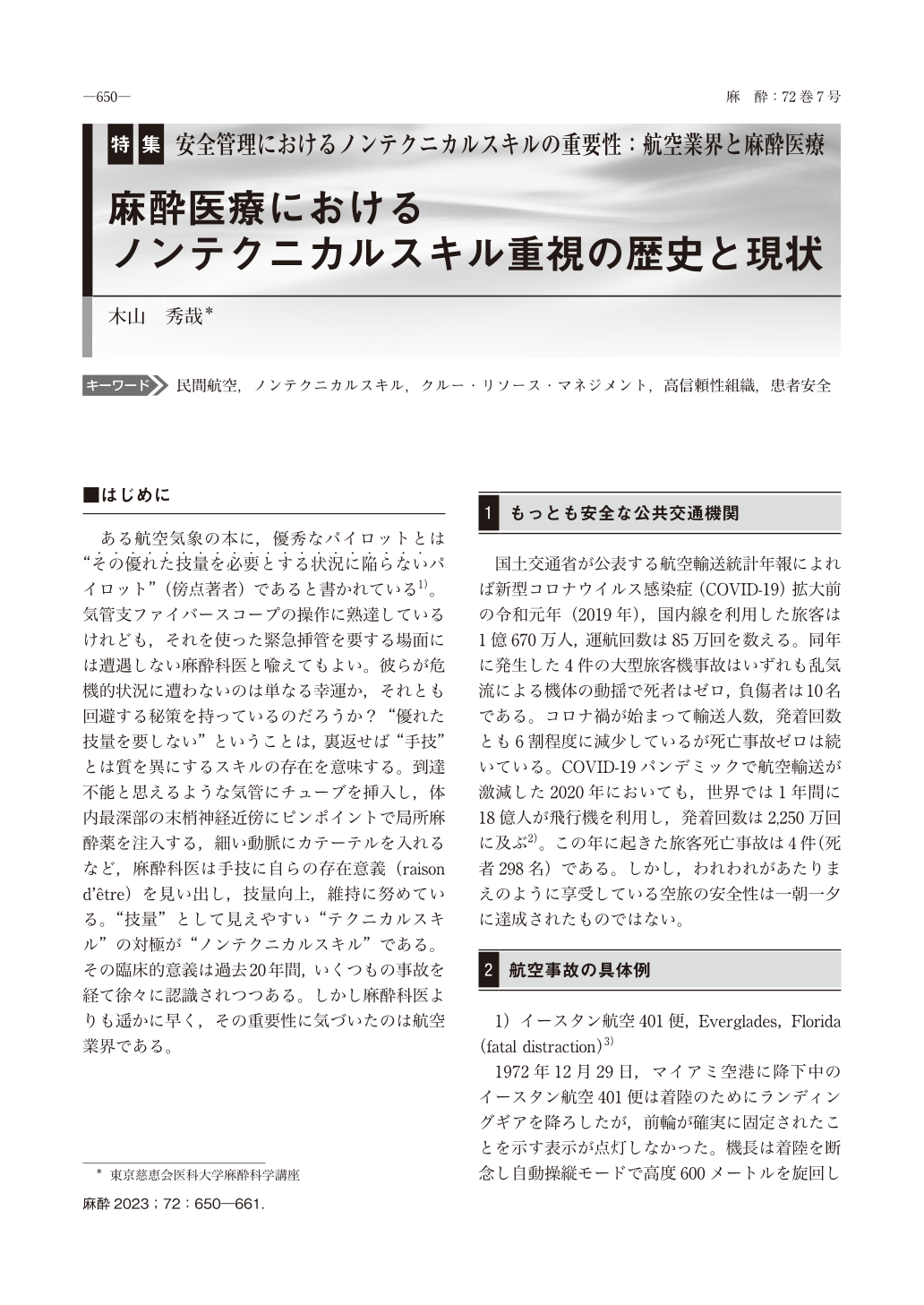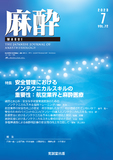Japanese
English
- 有料閲覧
- Abstract 文献概要
- 1ページ目 Look Inside
- 参考文献 Reference
- サイト内被引用 Cited by
はじめに
ある航空気象の本に,優秀なパイロットとは “その優れた技量を必要とする状況に陥らないパイロット”(傍点著者)であると書かれている1)。気管支ファイバースコープの操作に熟達しているけれども,それを使った緊急挿管を要する場面には遭遇しない麻酔科医と喩えてもよい。彼らが危機的状況に遭わないのは単なる幸運か,それとも回避する秘策を持っているのだろうか? “優れた技量を要しない” ということは,裏返せば “手技” とは質を異にするスキルの存在を意味する。到達不能と思えるような気管にチューブを挿入し,体内最深部の末梢神経近傍にピンポイントで局所麻酔薬を注入する,細い動脈にカテーテルを入れるなど,麻酔科医は手技に自らの存在意義(raison d’être)を見い出し,技量向上,維持に努めている。“技量” として見えやすい “テクニカルスキル” の対極が “ノンテクニカルスキル” である。その臨床的意義は過去20年間,いくつもの事故を経て徐々に認識されつつある。しかし麻酔科医よりも遥かに早く,その重要性に気づいたのは航空業界である。
Accident investigation revealed that human factors such as lack of situation awareness, inadequate communication, have been responsible in a significant numbers of air disasters. Development of Crew Resource Management(CRM)programs started in late 1970’s to train non-technical skills of airline pilots, air traffic controllers and other personnel in aviation industry, and they have since been endorsed by many airline companies worldwide. Similarly, in many medical accidents including those in anesthesia, deficiency or lack of non-technical skills are repeatedly reported to have played a major role. Anesthesia CRM(ACRM)and Anaesthetists’ Non-Technical Skills(ANTS)were developed to address these issues in the United States and Scotland, respectively. Aviation and anesthesia are distinctly different fields, but they also have a lot in common:decision-making, uncertainty and reliance on technology in rapidly changing and dynamic situation. Superficial adoption of checklists or standard procedures in civil aviation may not work, but if appropriately modified and adapted to healthcare, they can help improve patients’ safety. There is much more to be learned from their Safety Culture of High Reliability Organizations. This article presents history of CRM in anesthesia and highlights importance of non-technical skills for safer anesthesia care.

Copyright © 2023 KOKUSEIDO CO., LTD. All Rights Reserved.


